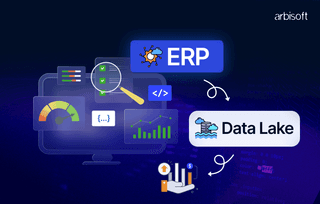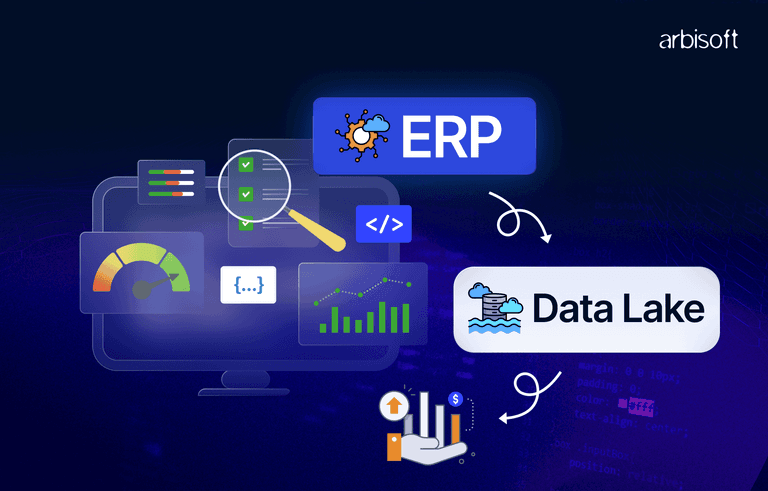We put excellence, value and quality above all - and it shows




A Technology Partnership That Goes Beyond Code

“Arbisoft has been my most trusted technology partner for now over 15 years. Arbisoft has very unique methods of recruiting and training, and the results demonstrate that. They have great teams, great positive attitudes and great communication.”
Improving Mobile App Performance: Best Practices for Android Development

For an Android application to be a useful one, its performance should be made to work in all areas, which is why many businesses rely on android app development services to ensure robust performance across all platforms. It should be competent to require the app to do everything quite efficiently, thus refraining from bothering the user with any act that is not smooth. Applications having high-performance impact when improved have good savings as well as make lucrative earnings. The new techniques when added for development and settings actually go a long way toward improving application performance.
This blog covers modern settings and the latest practices, drawn from insights from our App Development Company Dallas, in making your Android app faster in terms of performance, together with cutting-edge tools and settings.
Declarative UI with Jetpack Compose
Jetpack Compose, the latest Google tool for building user interfaces natively, has revolutionized Android development with a declarative programming model that allows developers to define UI components and compile all system UI updates. With improved rendering, Compose optimizes, reducing redundancy by the minus meddling with the added UI to enhance the performance with even better resource tracking. State lifting and one-way data flow had been simplified with Compose, so its complexity has been reduced, and the chances of mistakes avoided. The easy attachment to the Kotlin Coroutines developed monitoring understandings to realize that it operates intermittently by blocking important threads, which is quite an important aspect for keeping the app responsive.
Kotlin Coroutines and Flow
Kotlin Programming also provides powerful tools for asynchronous programming in Coroutines and Flow. Coroutines come with structured concurrency as well as sequential coding for complex asynchronous tasks; in that way, codes can be read but not edited. Based on the coroutines, Kotlin Flow is intended to be very responsive when one needs to use a database efficiently under backpressure to make sure that ingesting data does not burden the system.
HILT Dependency Injection Implementation
HILT is an Android dependency injection library suggested for public use. By developing DI using HILT, writing boilerplate code has been reduced significantly, it also becomes easier to maintain lifetimes to prevent memory leaks and create high-performance applications. On top of that, it is made by Hilt possible to swap dependencies; therefore, unit tests and integration tests are now made easier.
Room and DataStore for Efficient Data Management
Efficient data storage and management are vital application performance factors. Room is perfect for relational data since it guarantees SQL queries compiled at build time and integrates easily with Kotlin coroutines for smooth operations while DataStore suits storing key-value pairs very well for saving small pieces of data due to performance and typing safety over SharedPreferences.
Retrofit and OkHttp to Improve Network
Network calls are the lifeblood of most apps. Executing them well means a heightened responsiveness for the user. With the support of OkHttp, Retrofit is a very formidable combination of resource containment for network performance. Serialization speed can be enhanced with libraries such as Kotlin Serialization or Moshi, which are faster alternatives to legacy serialization libraries like GSON for JSON parsing. Smart caching and GZIP compression can also be employed to minimize data usage and speed up loading.
Implementing an Efficient Image Loading
Coil-Coroutine Image Loader is a contemporary image-loading library created specifically for the Kotlin programming language. It addresses issues of efficient memory management and caching methods to avoid OutOfMemoryError. With Coil, life-aware automatic image requests are performed when the scenes are cut, thereby saving up on system resources while ensuring a smooth experience for the end-users.
Benefits of Android Jetpack Libraries
Android Jetpack components are libraries that help developers follow best practices, reduce boilerplate code in programming, and provide code that works seamlessly across the different versions of Android and devices.ViewModels and LiveData tidy up otherwise clumsy MVVM configuration and WorkManager enables effectively managing scheduling and background tasks; the Navigation section does the same for in-app navigation-all aimed at more effective applications.
Active Performance Monitoring
Optimal application performance needs regular monitoring through tools like Android Vitals in the Google Play Console, and integrating automation testing services can further streamline this process. In addition, custom performance monitoring can be achieved using the library Koin for dependency injection and Timber for logging, both of which would help find problems early.
Use Case Example
Building a news app is the latest offering for all, wherein news and the best-wishing headlines are the source of personalized suggestions, online reading, and easy-to-use interfaces. The purpose of easy access is through very clear classifications of media content. Make sure accurate and real-time information is provided from trusted sources over as many topics, channels, and subjects, from world news through technology to sports and entertainment.
Instead, it is given by definition to suggest media personalization, which could benefit the reader and bring more engagement. Besides, the app is also kept saved for offline reading, to view news even offline.
It would be multi-lingual and multi-regional to reach a global audience. The app also needs to be well-optimized for an operation to ensure super fast and smooth delivery. Lastly, the application in question must weigh the security and privacy of the users, along with strong measures for data security.
The above said instruments and techniques are something that would be considered for the high-performance media app.
Jetpack Compose is an excellent tool for visually easy creation and efficiency which is quite critical to make media consumption fun. Kotlin Coroutines and Flow do an efficient job in handling asynchronous tasks, like media fetching and image loading, which will make the user experience smooth. Hilt is well-handling dependencies, which makes your app modular and manageable. Datastore is great for offline readability and personalization because local data storage is optimized. Retrofit and Okhttp manage simultaneous network requests and ensure timely delivery of media. The coil improves the weight of images, making the media attractive. Android Jetpack Libraries give you some of the most basic features like navigation, background, and more.
Conclusion
Of course, optimizing Android App Performance is a continuous process that entails many steps. By applying advanced tools like Jetpack Compose, Kotlin Coroutines, and Hilt, along with best practices toward UI design, data handling, and network performance, developers can create high-performance applications that make their end-users thrash around with excitement and set themselves miles apart from the rest of the crowd in the competitive mobile scenario and sections of the development cycle. They are equally eligible to offer those.
























